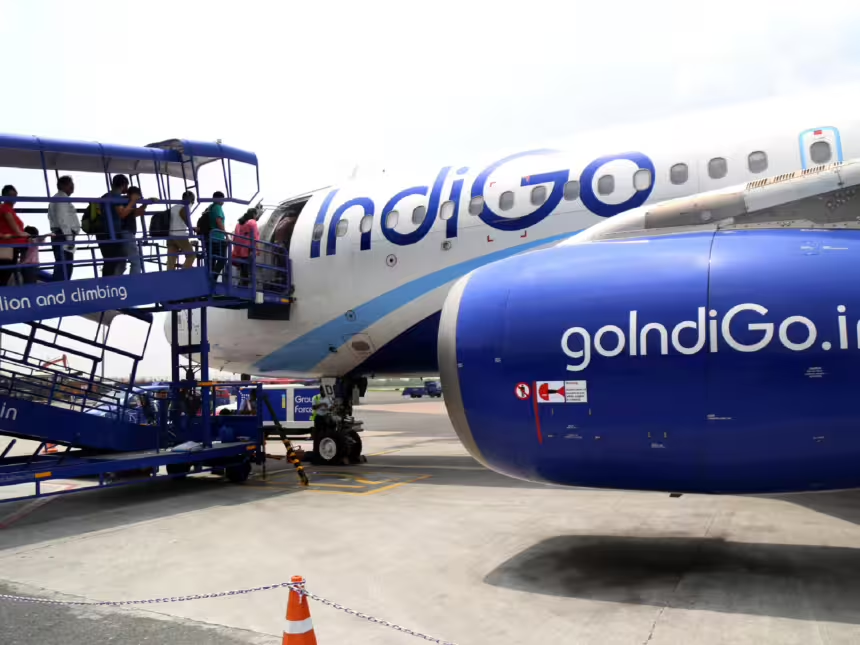IndiGo, India’s largest airline by market share, has reported a net loss of $117.7 million for the second quarter of FY2024. This sharp downturn in financial performance comes amid multiple challenges, including aircraft groundings and surging fuel prices that have plagued the global aviation sector.

The Impact of Aircraft Groundings
One of the primary factors contributing to the Q2 loss was the significant number of grounded aircraft within IndiGo’s fleet. Due to delays in the delivery of spare parts and technical issues with some of its planes, the airline faced operational disruptions. Grounding these aircraft impacted flight schedules, leading to reduced capacity and lost revenue from canceled or delayed services.
IndiGo has one of the largest fleets in Asia, primarily consisting of Airbus A320 and A321neo aircraft. While the airline’s fleet expansion has been instrumental in its rapid growth, it has also made IndiGo more vulnerable to maintenance and supply chain issues that affect a high-volume operation. The airline has been aggressively expanding its domestic and international routes, but the grounding of planes hampered its ability to meet growing demand.
Speaking on the issue, IndiGo’s CEO, Pieter Elbers, acknowledged the groundings as a significant operational setback but remained optimistic, stating:
“We are working closely with our partners to resolve the technical challenges. We expect a substantial number of our grounded aircraft to return to service in the coming months.”

Rising Fuel Prices Amplify Losses
Adding to IndiGo’s woes are rising aviation fuel prices, a trend that has put pressure on airlines globally. Jet fuel, which constitutes a significant portion of an airline’s operating expenses, saw a sharp increase in prices due to geopolitical tensions, especially in the Middle East, where disruptions in oil production have driven costs upward.
IndiGo’s Chief Financial Officer, Gaurav Negi, highlighted that fuel expenses rose by more than 30% year-over-year, contributing significantly to the airline’s losses in Q2. Despite efforts to hedge against rising fuel prices, the volatility in the oil market has eroded IndiGo’s profit margins, even as it continues to focus on cost-cutting measures.
Revenue Growth & Expansion Plans
Despite the Q2 loss, IndiGo has reported a 15% year-on-year increase in revenue, driven by a strong rebound in passenger demand, especially in international markets. The airline’s revenue from international operations has been growing rapidly as it continues to expand its footprint in Asia, the Middle East, and Europe.
The airline recently launched new routes to the Middle East, Southeast Asia, and Africa, and plans to further expand its international network as demand for post-pandemic travel surges. However, rising costs and operational challenges have limited the full realization of these revenue gains.
“We remain focused on our long-term growth strategy,” said Elbers.
“The demand is there, and as we address the challenges around our fleet and fuel costs, we are confident in returning to profitability.”

Mitigating the Impact: Future Outlook
To mitigate the losses, IndiGo has been implementing several strategies, including renegotiating lease agreements with lessors, optimizing route profitability, and exploring alternative sources of revenue such as cargo services. The airline has also been focusing on fleet modernization by phasing out older, less fuel-efficient aircraft and increasing the number of A321neo planes, which consume 15% less fuel compared to older models.
IndiGo has been a dominant force in the Indian aviation sector, holding over 50% of the market share in domestic travel. However, with increasing operational costs and global uncertainties, the airline, like many others, is feeling the squeeze.
Looking ahead, the company expects challenges to persist in the near term but is optimistic about a return to profitability once fuel prices stabilize and grounded aircraft return to service.
IndiGo’s leadership remains hopeful that the second half of the fiscal year will provide a more favorable environment for recovery as it navigates through the current turbulence. What are your thoughts on this story? Let us know in the comments below!









